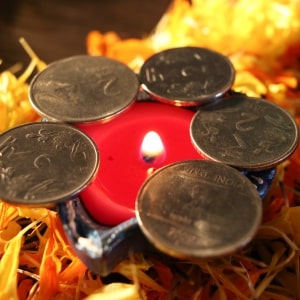Navratri, a vibrant and joyous festival celebrated by Hindus across the world, is a nine-night-long extravaganza dedicated to the worship of the Divine Mother, Devi Durga. Each day of Navratri is associated with a specific form of the goddess, known as “Devi,” and a unique color that devotees adorn themselves with. This festival signifies the triumph of good over evil and the renewal of faith in the power of the Divine. In this article we will talk about 9 Days of Navratri Devi Names and Colours that symbolize their presence during this auspicious celebration.

9 Days of Navratri Devi Names and Colours
| Days | Devi Names | Colours |
| Day 1: Pratipada | Devi Shailputri | Red |
| Day 2: Dwitiya | Devi Brahmacharini | Royal Blue |
| Day 3: Tritiya | Devi Chandraghanta | Yellow |
| Day 4: Chaturthi | Devi Kushmanda | Green |
| Day 5: Panchami | Devi Skandamata | Grey |
| Day 6: Shashthi | Devi Katyayani | Orange |
| Day 7: Saptami | Devi Kalratri | White |
| Day 8: Ashtami | Devi Maha Gauri | Pink |
| Day 9: Navami | Devi Siddhidatri | Purple |
Also Read: How are colours of Navratri Decided?
Day 1: Pratipada

The first day of Navratri is dedicated to Shailputri, the daughter of the Himalayas, and the consort of Lord Shiva. She is depicted riding a bull and carrying a trident. On this day, devotees wear red, symbolizing passion, power, and the awakening of energy.
Day 2: Dwitiya
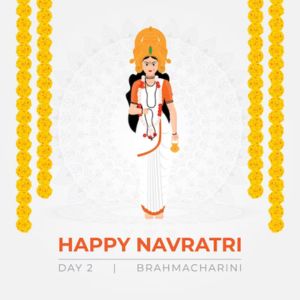
The second day is dedicated to Brahmacharini, a symbol of peace, serenity, and wisdom. She is depicted as a meditating goddess. Royal blue, the color for this day, signifies her calm and composed nature.
Day 3: Tritiya
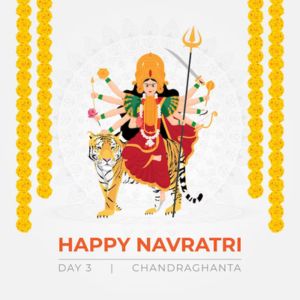
The third day celebrates Chandraghanta, the goddess who is believed to ward off evil with her fierce demeanor. She has a crescent moon on her forehead, which gives her the name Chandraghanta. Yellow is the color of this day, symbolizing brightness and optimism.
Day 4: Chaturthi
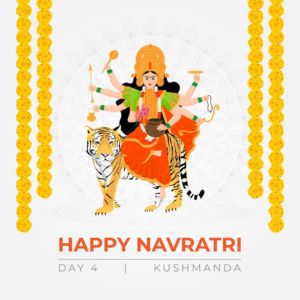
Kushmanda, the goddess of the fourth day, is believed to have created the universe with her smile. She radiates a divine, green aura, representing growth, fertility, and the creation of life.
Day 5: Panchami
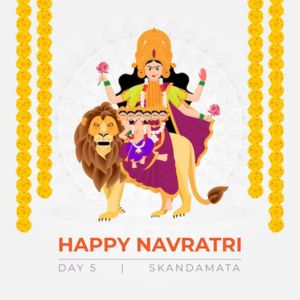
The fifth day is dedicated to Skandamata, the mother of Lord Kartikeya. She holds her son in her lap and is depicted with four hands. Grey represents the transforming strength and the power of motherhood.
Day 6: Shashthi
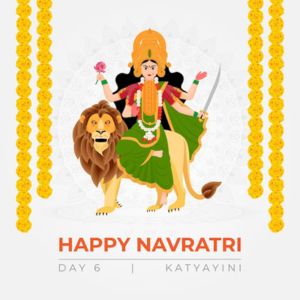
On the sixth day, we worship Katyayani, who is known for her fierce warrior avatar. She is often depicted riding a lion and carrying a sword. Devotees wear orange on this day to invoke her courage and valor.
Day 7: Saptami
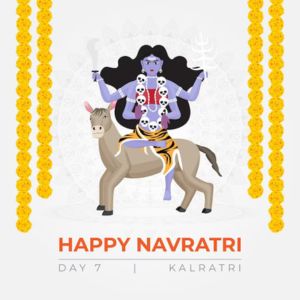
The seventh day is dedicated to Kalratri, the fiercest form of Durga. She is depicted as a black-skinned goddess with a garland of skulls and a sword in her hand. Devotees wear white on this day, symbolizing purity and the destruction of darkness.
Day 8: Ashtami
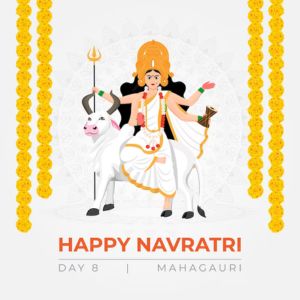
Maha Gauri, the gentle and compassionate goddess, is worshipped on the eighth day. She is often depicted in a white or pink saree, radiating a sense of serenity and purity. Pink is the color that represents her divine presence.
Day 9: Navami
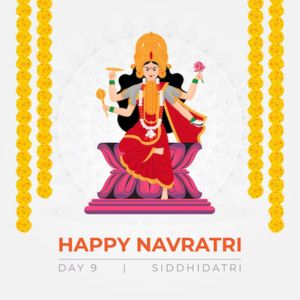
The ninth and final day of Navratri is dedicated to Siddhidatri, the goddess of supernatural powers and achievements. Devotees wear purple to symbolize her divine aura and the culmination of spiritual wisdom.
Also Read: Which Colour to Wear on Which Day
Navratri, the nine-day festival of devotion and celebration, is a vibrant and colorful journey that symbolizes the victory of good over evil. Each day brings forth a new aspect of Devi Durga, offering devotees the opportunity to connect with her diverse attributes. The colors associated with each day add an element of festivity and spirituality, enhancing the overall experience of Navratri. As devotees come together to celebrate this joyous occasion, they are reminded of the power, grace, and strength of the Divine Mother, filling their hearts with love and devotion.




